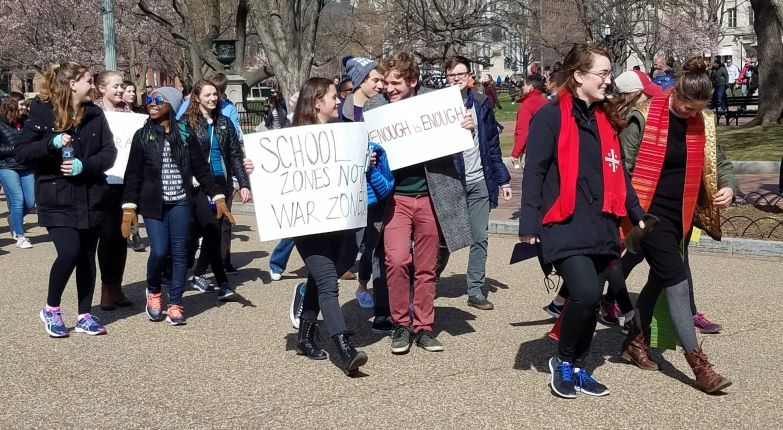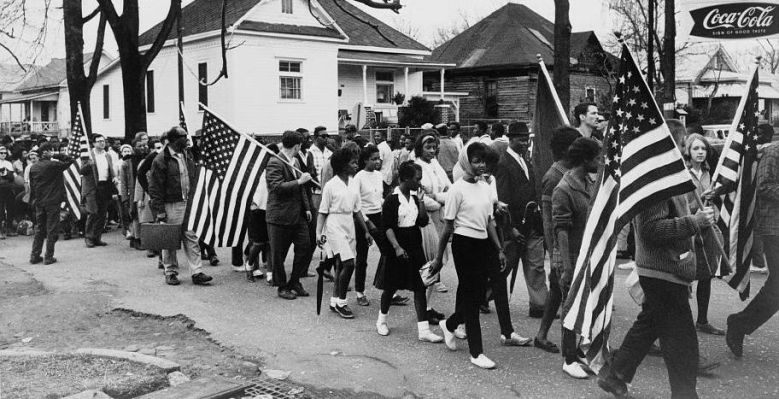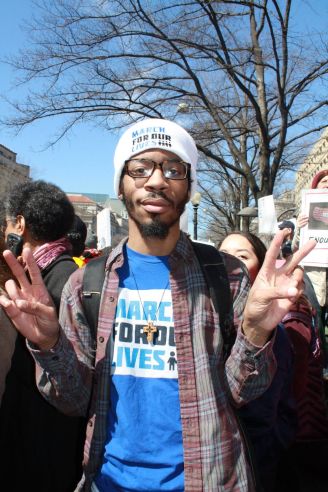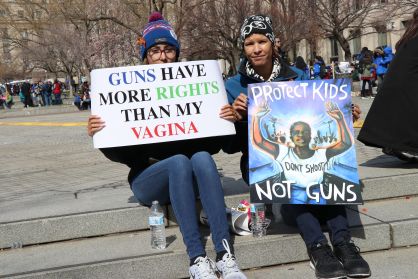Throughout history, young adults have stood for their rights and tried to create change in their country. Kids and teens have played crucial roles in historical movements in American history. The most recent example is The March for Our Lives.
On Feb. 14, 2018, Marjory Stoneman Douglas High School in Parkland Florida was attacked when a former student shot and killed 17 people. Following the mass shooting, a group of teenagers were outraged, not just at their school but at the lack of protections preventing gun violence.
Together they started a movement across the country for stricter gun regulation. The Parkland students planned school walkouts that high schools nationwide participated in and organized marches that were held in cities across the country. The students spoke at the March for Our Lives in Washington D.C., which had approximately 800,000 attendees.
“There would be no March for Our Lives without young adults,” senior communication major Katie Briante, who attended the march, said. “They kind of came together and created this march.”


Similarly, during the Civil Rights movement, young adults were very involved in the protests.
On Feb. 1, 1960, four black male college students sat down at a lunch counter in a local diner in North Carolina. They were refused service by the white owner, but the four students refused to leave their seats until closing. Ezell Blair Jr., David Richmond, Franklin McCain and Joseph McNeil, also known as The Greensboro Four, returned with friends to continue their peaceful protest. After a few days, there were more than 300 protesters sitting at the diner.

“Students have historically had major roles in protest movements, both in the United States and abroad,” Malachi Purnell, junior history major who also attended the march in D.C., said. “In the 1960s, the Student Nonviolent Coordinating Committee was one of the dominant forces involved in the Civil Rights Movement. The role of students in the greater counterculture movement cannot be understated.”
The March for Our Lives was sparked by high school students from Florida and spread rapidly across the nation.
“At every junction and every facet of the march, young adults were there and they were there working hard,” Briante said.
Many young adults have followed the Parkland students lead in fighting for the cause.
“I attended the March for Our Lives in part out of a desire to support those kids who survived the shooting from Parkland,” Purnell said. “I remember on the night of the shooting thinking about my four younger siblings who are all still in elementary, middle and high school. Columbine, Virginia Tech, Sandy Hook and Marjory Stoneman Douglas all happened during my lifetime and I remember all except the first. There have also been two church shootings that I remember— the Charleston shooting and the Texas one last year. My siblings go to both church and school and I want them to be safe.”

Caroline Heath, a 17-year-old from Florida, attends school near Marjory Stoneman Douglas High School. She joined the cause partially because of her proximity to the Parkland shooting.
“I live 20 minutes from Parkland,” Heath said. “It’s something really close to home, and it’s sad that people have to be afraid to go in public anymore.”
The United States is not the only country where students take a stance against injustice.
The Tiananmen Square protest was started by students who wanted to end communism in China and wanted China to become a democratic society. Protesters came face-to-face with armed forces and tanks, ending in thousands of casualties. Almost 30 years later, China is still not a democratic country.
The May 1968 protests were one of the biggest protests in French history. Students stormed the streets to urge reform of their outdated university rules.
Recently, on March 22, workers and students took to the streets of France to protest President Macron’s new labor codes. Schools and public transportation were shutdown due to employees on strike.
A movement with so much velocity, such as the March for Our Lives, is bound to have critics and opposers. The Parkland students have been called “crisis actors” and have been insulted by adults online; however it did not stop them from fighting for what they believe in.
During other protests, such as the Tiananmen Square protests, young adults faced much worse consequences.
“Many students and young adults have died due to vocal participation in movements for vocal change. Andrew Goodman, Michael Schwerner and James Chaney— all under 25— were infamously lynched in 1964 for taking part in the Civil Rights Movement,” Purnell said. “At South Carolina State University in 1968 and Kent State and Jackson State University in 1970, a combined nine students were killed by the National Guard and police officers during protests.”
Students and young adults are trying to be leaders of the future and will continue to make change in countries around the world.
“They’re seeing the world that they grew up in, they are seeing all of the problems. Eventually, they say, ‘Enough is enough,’ then they decide to do something about it,” Briante said.
“In the wake of the tragedy on Feb. 14, we as students, as youth, decided that if adults weren’t going to take action, we would,” Marjory Stoneman Douglas student Alex Wind said in his speech.



